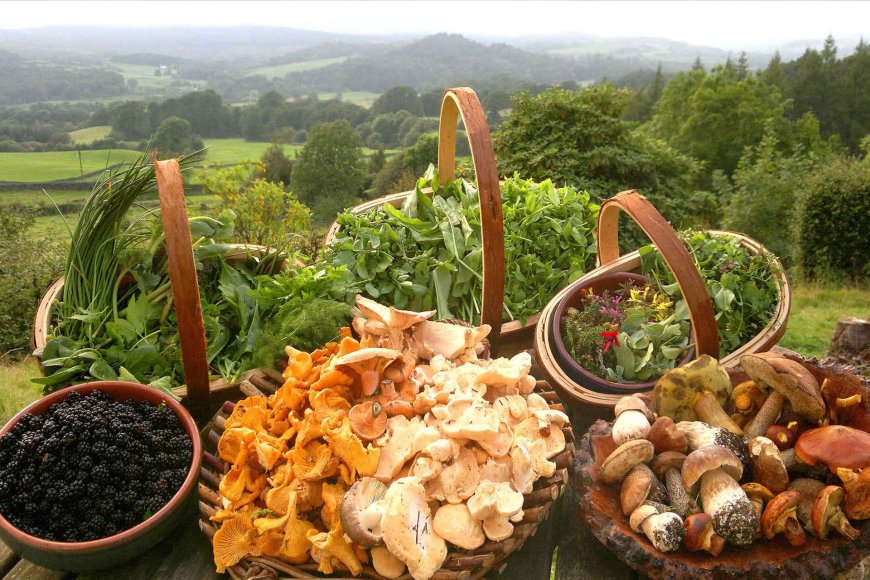Identifying the Best Wild Edible Foods: A Comprehensive Guide

Foraging for wild edible foods is a practice deeply rooted in human history. While the modern food industry provides a plethora of options, the allure of connecting with nature and sourcing food from the wild persists. However, the task of identifying safe and nutritious wild edibles can be daunting, as not all plants are suitable for consumption. To ensure a successful and safe foraging experience, it's essential to follow a systematic approach and adhere to certain guidelines. Here's a comprehensive guide on how to identify the best wild edible foods:
Education and Research:
Before embarking on a foraging expedition, educate yourself about the local flora, ecosystems, and specific edible plants in your region. Books, online resources, field guides, and local foraging workshops can provide valuable information. Familiarize yourself with the common plants in your area, their growth seasons, and distinguishing features.
Location and Habitat:
Choose your foraging spots wisely. Seek out areas that are free from pollution, pesticides, and other contaminants. Forests, meadows, riverbanks, and uncultivated lands are often good places to start. Pay attention to the types of plants that thrive in different habitats and microclimates.
Plant Identification:
Accurate plant identification is paramount. Follow these steps to ensure you're identifying plants correctly:
-
Leaf Characteristics: Examine leaf size, shape, color, arrangement, and texture. Take note of any unique patterns, veining, or hairs on the leaves.
-
Stem and Bark: Observe the stem color, texture, and any thorns or hairs. Note the characteristics of the bark, if applicable.
-
Flowers and Fruits: Flowers and fruits are important for identification. Take note of their color, size, shape, and arrangement. Keep in mind that some edible plants may not produce fruit until later in their growth cycle.
-
Smell and Taste: Gently crush a small piece of the plant and sniff for distinct odors. Be cautious when tasting; only taste a small portion and spit it out to avoid potential toxicity.
Safety First:
Prioritize safety above all else. Avoid consuming any plant unless you're 100% certain of its identification. Some plants may have toxic look-alikes, and misidentification can lead to serious health consequences. If you're uncertain, consult an experienced forager or a field guide.
Start with Easy-to-Identify Plants:
As a beginner, focus on learning a few easily recognizable and commonly found edible plants. Plants like dandelions, clover, wild berries, and plantain are good options to start with. As you gain experience and confidence, you can gradually expand your repertoire.
Avoid Protected or Endangered Species:
Be aware of local laws and regulations regarding foraging. Avoid harvesting plants from protected areas or those that are considered rare or endangered. Responsible foraging helps preserve the delicate balance of ecosystems.
Edibility Testing:
Before consuming a new wild edible, perform an edibility test to ensure you don't have adverse reactions. Rub a small part of the plant on a sensitive area of your skin, like the inside of your wrist or forearm. Wait 24 hours and monitor for any irritation or allergic reactions.
Stay Away from Plants with Warning Signs:
Certain plants exhibit warning signs that they're not suitable for consumption. These signs include thorns, spines, milky sap, a bitter taste, or a foul odor. Plants with these characteristics are best avoided.
Learn About Poisonous Plants:
Familiarize yourself with common poisonous plants in your area. Being able to differentiate between edible and toxic plants is crucial for your safety. Poisonous plants like poison ivy, hemlock, and deadly nightshade have distinct characteristics that can help you avoid them.
Document Your Findings:
Keep a foraging journal to record your observations. Note the location, time of year, plant characteristics, and any reactions you may have after testing for edibility. This documentation can be invaluable for future foraging trips.
Respect the Environment:
Foraging is an opportunity to connect with nature. Leave no trace by minimizing your impact on the environment. Harvest plants responsibly, taking only what you need and ensuring the plant population remains healthy.
Experiment and Enjoy:
Once you've identified safe and edible wild plants, experiment with incorporating them into your meals. Start with small quantities to assess taste and tolerance. Wild edibles can add unique flavors, textures, and nutritional value to your diet.
In Conclusion: Identifying the Best Wild Edible Foods: A Comprehensive Guide
identifying the best wild edible foods requires a combination of knowledge, careful observation, and respect for nature. The process involves learning about plant characteristics, understanding their habitats, and prioritizing safety. With education, practice, and a cautious approach, foraging can provide a rewarding and sustainable way to connect with the natural world while enjoying delicious and nutritious foods.
What's Your Reaction?











































